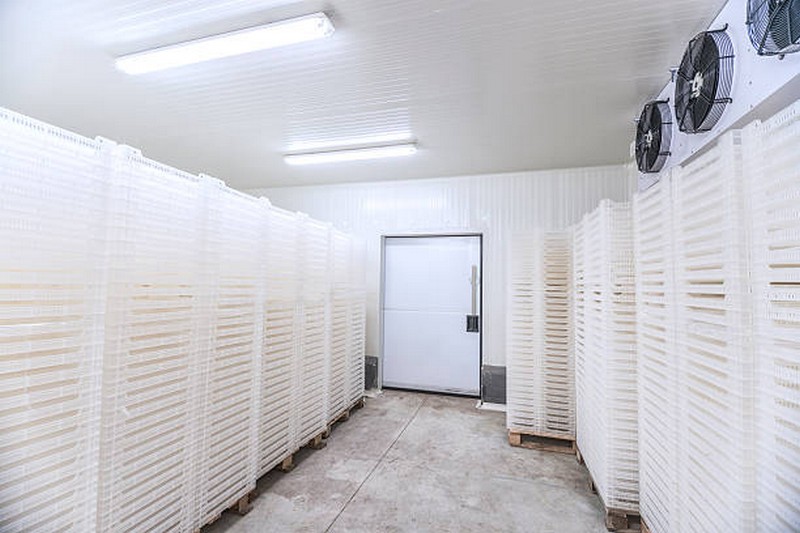Small to medium-sized firms have the ongoing challenge of controlling operating expenses without sacrificing quality or efficiency. This is particularly true in the refrigeration industry, where the necessity to maintain exact temperature conditions must be weighed against the need to reduce energy usage and operating costs. Fortunately, developments in cooling technology have resulted in the creation of low-cost cooling systems designed particularly for small and medium-sized assembly cold rooms. These systems not only exceed high product preservation criteria, but they also save significantly on energy and maintenance expenses.
Understanding the Needs of Small to Medium-Sized Cold Rooms
Small to medium-sized cold rooms are generally used by enterprises such as boutique food manufacturers, local pharmacies, flower shops, and small-scale warehouses. These organizations need dependable cooling systems that can maintain particular temperature ranges, frequently with the ability to change settings depending on stock levels and kinds. Furthermore, these firms often work under severe budget limits, making cost efficiency a primary goal.
Selecting the Right Cooling System
The selection of a cooling system is critical in determining both the efficiency and cost-effectiveness of a cold room. Here are several options well-suited to small and medium-sized operations:
- Split Refrigeration Systems: These systems consist of two main components – an evaporator unit inside the cold room and a condensing unit located outside. Split systems are known for their efficiency, ease of installation, and relatively low initial cost, making them a popular choice for smaller operations.
- Monoblock Units: Monoblock refrigeration units are self-contained systems that mount directly into the cold room wall or ceiling. Ideal for smaller spaces, these units are easy to install and maintain, offering a compact, all-in-one solution that can be more cost-effective for businesses with limited cooling requirements.
- Evaporative Coolers: For businesses located in dry climates, evaporative coolers offer an energy-efficient alternative to traditional refrigeration units. By using water evaporation to cool the air, these systems consume significantly less electricity, though they are less suited to high humidity environments or where precise temperature control is critical.
- VRF/VRV Systems: Variable Refrigerant Flow (VRF) or Variable Refrigerant Volume (VRV) systems provide highly efficient and precise temperature control by circulating only the minimum amount of refrigerant needed at any given time. While the initial investment may be higher, the operational savings and scalability make VRF/VRV systems an attractive option for businesses planning for growth.
Strategies for Cost-Effective Cooling
Beyond selecting the right system, several strategies can help maximize the cost-effectiveness of your cold room’s cooling system:
- Regular Maintenance: Keeping your cooling system well-maintained is essential for optimal performance and efficiency. Regular checks and servicing can prevent costly breakdowns and extend the lifespan of the system.
- Optimal Insulation: Investing in high-quality insulation for your cold room can significantly reduce cooling requirements and energy consumption. Ensure that doors, walls, and ceilings are properly insulated to maintain consistent temperatures with minimal energy input.
- Smart Controls: Modern cooling systems often come with smart controls that allow for precise temperature management, automated energy-saving modes, and even remote monitoring. Utilizing these features can help reduce energy waste and provide insights into potential efficiencies.
- Energy Audits: Conducting regular energy audits can identify opportunities for reducing consumption, such as upgrading to LED lighting, sealing leaks, or optimizing the layout for better airflow.
- Government Incentives: Look into government programs or incentives for businesses that invest in energy-efficient technologies. These can offset the initial costs of installing or upgrading your cooling system.
The Benefits of Cost-Effective Cooling Solutions
Adopting a cost-effective cooling solution for your assembly cold room offers a multitude of benefits:
- Reduced Operational Costs: Lower energy consumption directly translates to lower utility bills, freeing up resources that can be invested back into the business.
- Environmental Responsibility: Energy-efficient systems not only reduce costs but also minimize your business’s carbon footprint, contributing to a more sustainable future.
- Product Integrity: Reliable and precise cooling ensures that products are stored under optimal conditions, maintaining quality and extending shelf life.
- Competitive Advantage: The savings and efficiencies gained from cost-effective cooling can provide a competitive edge, allowing businesses to offer better prices or invest in product development.
Navigating the complexity of refrigeration does not have to mean sacrificing quality for money. Businesses may get the advantages of a high-performing cold room without incurring exorbitant expenditures by carefully choosing the appropriate cooling system and implementing smart efficiency measures. Embracing cost-effective cooling solutions not only benefits financial health, but also complies with environmental duties and preserves the durability and quality of stored items, creating a win-win situation for growing enterprises.

